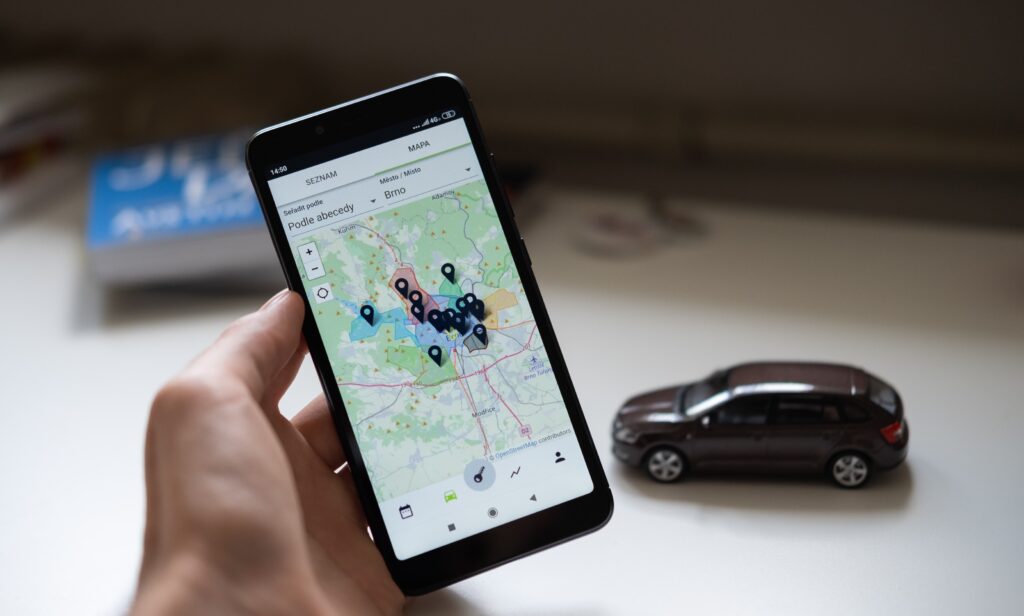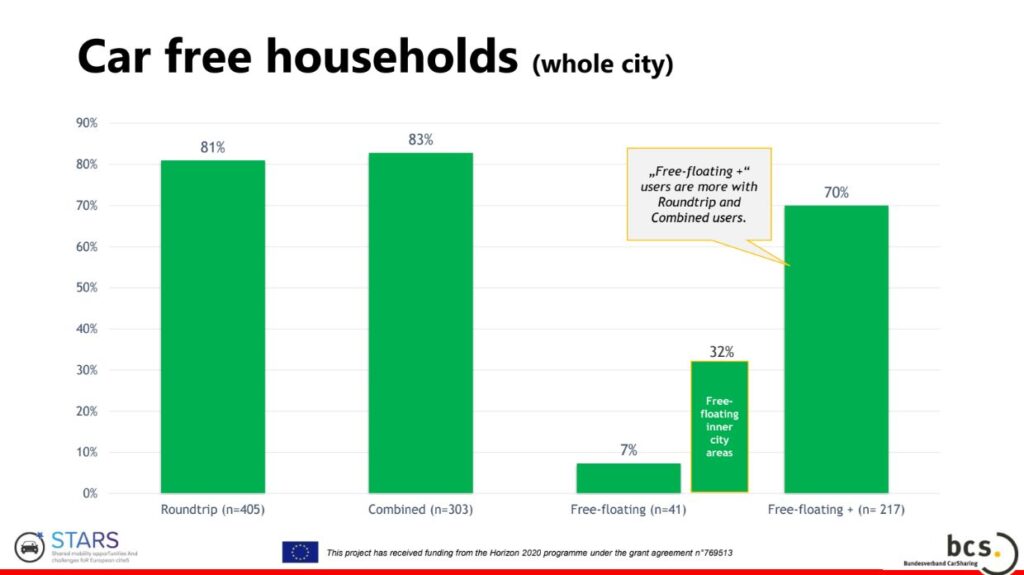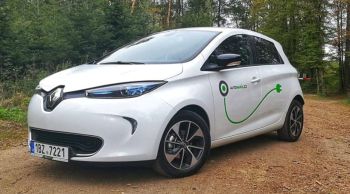It became increasingly easier to share a car in the Czech Republic, especially in large cities like Prague. It pays off with an annual drive of 10,000 km or less. The benefits include no worries about car service and maintenance. You can also choose a different type of car for each trip - a family station wagon for a holiday, a city car for a small purchase.
The idea of car sharing is based on the fact that in today's modern world you do not need to own a car, on the contrary, you can do without it quite well, such as car free family.
How carsharing works
The way you use car sharing varies a lot depending on the type of carsharing. There are several types of carsharing, which differ according to who owns the car and how you book the car:
- Station-based carsharing – the company or association operates a fleet of cars. Users book cars in advance via a web or mobile application. They pay for the booked hours and kilometers traveled. Cars are picked up and returned at a predetermined location.
- Free-floating carsharing – similar to the previous case, with the difference that vehicles can be picked up and returned throughout the city. Because of this, however, it is not possible to book them long in advance.
- Peer-to-peer carsharing – arranging private car rentals between people.
Let's take look at the advantages and disadvantages of each type of carsharing.
Roundtrip carsharing
A company operating a roundtrip or also station-based carsharing owns a fleet of cars that it operates. Cars are typically fitted with technology that allows access to the vehicle via a chip card or mobile application (see picture). Cars stand in reserved places, sometimes marked with the company logo. The great advantage of station-based carsharing is that you can book a car long in advance and you know exactly what the car will be and where it will stand. The disadvantage is the need to return and pick up at designated locations, which prolongs travel time and brings some discomfort. The vehicle fleet is diverse, from small city vehicles, through family cars to nine-seater vans.

A variant is zone-based carsharing, where you can park and pick up the car within the designated parking zone. You can find the vehicles in the application on your smartphone.
Carsharing of this type is historically the oldest, originally originated in local communities that passed keys from hand to hand. Vehicles are much better used - most companies report that a shared car drives 30% - 40% of the time, which is much more than the 4% that is reported for private cars. Data from Germany (see picture below) show that this type of car sharing successfully replaces private cars and thus helps to improve the traffic situation in the city and saves parking spaces. The statement that one shared car will replace up to 10 private cars therefore applies only to this type of carsharing, not to all types, as is sometimes incorrectly stated.
Free-floating carsharing
A company's fleet of free-floating carsharing is typically much larger and more uniform. In large cities, which are the main domain of free-floating carsharing, companies can operate hundreds to thousands of cars. In this model, the whole city functions as one large parking zone and you can pick up and park your car anywhere. However, you cannot book a specific car and these companies typically do not even allow advance booking.
Carsharing of this type is usually significantly more expensive, especially for short reservations, which make up the majority of sales. Some companies charge per minute and are close to a taxi ride.
Free-floating carsharing needs a large fleet of cars to run successfully, which must be available at all times, so these cars often stand in the same place for several days. The typical operating time of a shared car in this mode is less than 10%, which is not very different from a private car and therefore does not contribute to saving parking spaces in large cities. Thanks to the way it is used (short journeys), it is also in competition with taxis and public transport and does not lead to the replacement of private cars by shared ones (see picture).

Percentage of households in Frankfurt, Germany that do not own a car. The first column shows households using only roundtrip carsharing. The second column of the household using roundtrip and free-floating carsharing from one company. The third column shows households using only free-floating carsharing. The fourth column shows households that use carsharing from several providers, of which at least one is free-floating.
Peer-to-peer carsharing
The latest addition to the carsharing family is peer-to-peer carsharing. In this mode, people offer and share their own car on the platform of a carsharring operator, which is actually only a rental agent (similar to, for example, AirBnB in the case of arranging the rental of accommodation).
Peer-to-peer carsharing offers an interesting opportunity to earn extra money for those whose car is most idle in front of the house (and there are many of them). It then offers a choice of a very large range of vehicles. However, interested people must be prepared for the fact that the technical condition of the vehicle is not guaranteed. The disadvantage is also the impossibility of renting a car for only a few hours (the minimum rental period is usually one day) and the need to conclude a new contract with each loan.
For whom is carsharing beneficial?
It is generally stated that carsharing is beneficial for people who drive less than 10,000 km a year. A clear graph and calculation of the comparison of the costs of your own and rented car can be seen, for example, at www.srovnator.cz.
But carsharing also has other advantages than just financial. The average age of a car in the Czech Republic has recently reached 15 years and the vehicle fleet continues to age. Carsharing companies, on the other hand, buy new cars and renew them regularly.
You also usually can't move a wardrobe with your own car, while in shared fleets there is a van. Carsharing can also serve as a second car to the family or as an accessory to a company car. It may be interesting for technology enthusiasts that carsharing companies often experiment with hybrid cars or electromobility, so it is possible to try these innovations in normal operation without obligation.

Car sharing in the Czech Republic
In the Czech Republic, carsharing was established in 2003 with the founding of the civic association Autonapůl, which was later transformed into a cooperative. The first competitors joined in 2013 and today there are up to 10 companies operating in the Czech Republic, especially in Prague.
A few years ago, the Czech Carsharing Association was established, which provides data on the entire market. According to the association, 760 cars drove in the Czech Republic in June 2019 (see chart).

The Association also represents carsharing companies in negotiations with the town halls of large cities. Thanks to this, we have already managed to negotiate support for car parking in the largest Czech cities, mainly in Prague, Brno and Pilsen. Exact conditions vary from city to city, but in principle, shared cars can park in residential parking zones for free or for a flat annual fee. However, this fee is paid by the carsharing company, so parking in the so-called blue zones is completely free for carsharing users.
What is not carsharing, but is useful
Some ways of using a car cannot be described as sharing, but they complement perfectly with carsharing.
In the Czech Republic, the use of one car is often used by an extended family, eg parents share a car with children or siblings among themselves. A car from a professional carsharing company can then serve as a supplement for cases where the family car is not available (eg it is in service) or is not suitable for the given purpose (eg delivery for moving).
Similarly, a shared car can serve as a second car to the family. For example, if one parent regularly drives to work, the other may from time to time use a shared car to travel to the doctor with the child.
It is not always necessary to drive a car, sometimes it is possible to take advantage of the fact that someone else is already driving in the same direction as you. There are also specialized servers in the Czech Republic that connect drivers with people looking for a ride, such as blablacar.cz.
People who use carsharing can also use a taxi to travel around the city, such as Liftago, which has a very nicely designed mobile application.
Other modes of transport
Other modes of transport complement each other perfectly with shared cars. For Prague, it is mapped by the project Čistou stopou.
In particular, it is public transport that can cover most of the transport needs of its inhabitants, especially in large cities.
A special chapter is cycling. Most Czechs have their own bikes and for regular trips to work it is often the most suitable mode of transport for health and environmental reasons. The car is then only needed on weekends and for longer trips.
Carsharing users are also more likely to use shared bikes, such as Rekola or scooters.
There is a convenient way between cities, for example, by train. Autonapůl established cooperation with the national carrier Czech Railways within the bonus program ČD Points.